Welcome to our exploration of the ten best beautiful places in Fukuoka!
This dynamic city, nestled on the northern shore of Japan’s Kyushu Island, offers a captivating blend of urban sophistication and scenic natural escapes.
From the architectural marvel of Canal City Hakata to the tranquil expanse of Uminonakamichi Seaside Park, Fukuoka is brimming with diverse attractions that promise to enchant every visitor.
Join us as we delve into the city’s most stunning locales, each offering a unique glimpse into Fukuoka’s vibrant culture and breathtaking landscapes.
Whether you’re a history buff, nature lover, or urban explorer, Fukuoka has something spectacular in store for you.
- Recommended BEST Tours in Fukuoka
- Recommended Fukuoka Hotels
- Cheap Flights, Airline Tickets & Plane Tickets (TRIP.COM)
Number 10: Fukuoka Tower.
Starting at number 10, Fukuoka Tower is an iconic landmark towering over the cityscape. Reaching a height of 234 meters, it is not only the tallest building in Fukuoka but also one of the tallest seaside towers in Japan.
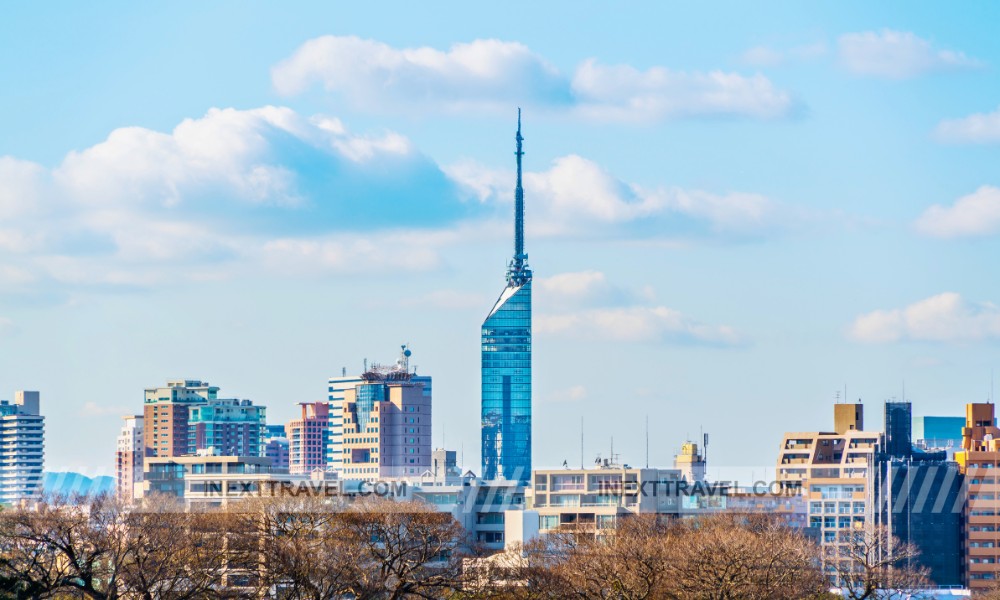
Its sleek, mirrored exterior, designed to withstand earthquakes and typhoons, reflects the sunlight during the day and is beautifully illuminated by LED lights at night, making it a striking feature of the city’s skyline.
The observation deck, situated 123 meters above the ground, provides visitors with a spectacular 360-degree panoramic view of Fukuoka and beyond. From this vantage point, one can see across the urban spread to the surrounding mountains and out over Hakata Bay, with views extending to the islands that dot the coast.
The deck is stunning at sunset when the sky and cityscape are bathed in golden hues, offering a perfect backdrop for breathtaking photographs and unforgettable memories.
Fukuoka Tower also features a variety of attractions besides the observation deck. There is a café where visitors can relax and enjoy refreshments with a view and a souvenir shop offering a range of gifts that embody Fukuoka’s spirit.
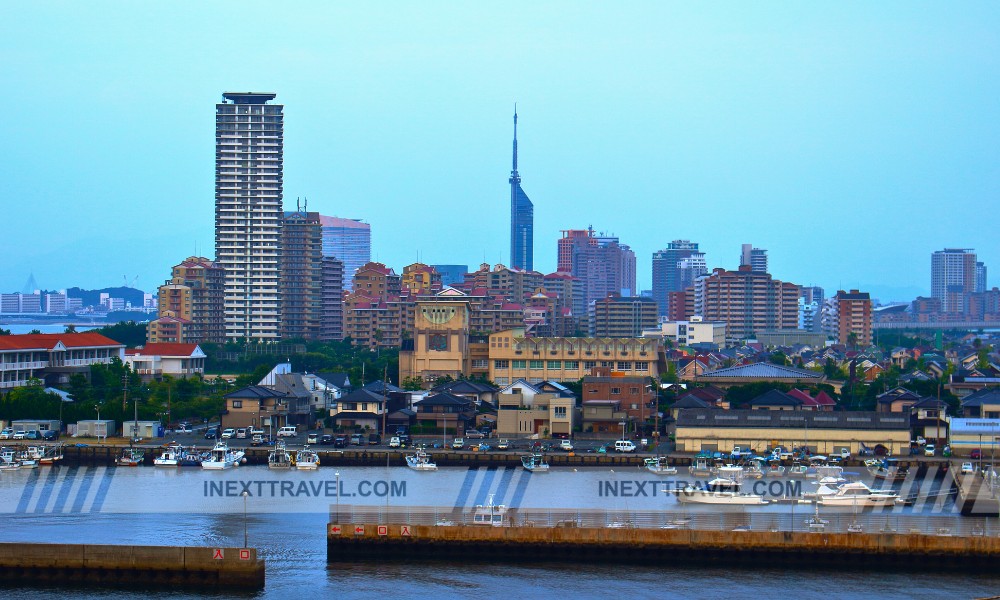
The tower frequently hosts special events and exhibitions, adding an element of cultural engagement to the visitor experience. Additionally, there’s a “Lover’s Sanctuary” spot, complete with a heart-shaped frame that is a popular photo spot for couples, making it a romantic destination for visitors.
Constructed as a symbol for the 1989 Asia Pacific Expo, Fukuoka Tower remains a testament to the city’s modernity and welcoming spirit. Whether you visit in the daytime to enjoy the expansive views or in the evening to experience the city lights, Fukuoka Tower offers one of the best aerial perspectives in Fukuoka, combining scenic beauty with architectural marvel.
Number 9: Ohori Park.
At number 9, Ohori Park is a serene oasis nestled in the heart of Fukuoka, offering a tranquil retreat from the bustling city life. The park’s design is inspired by classical Chinese gardens, particularly those of the famous West Lake in Hangzhou, China.
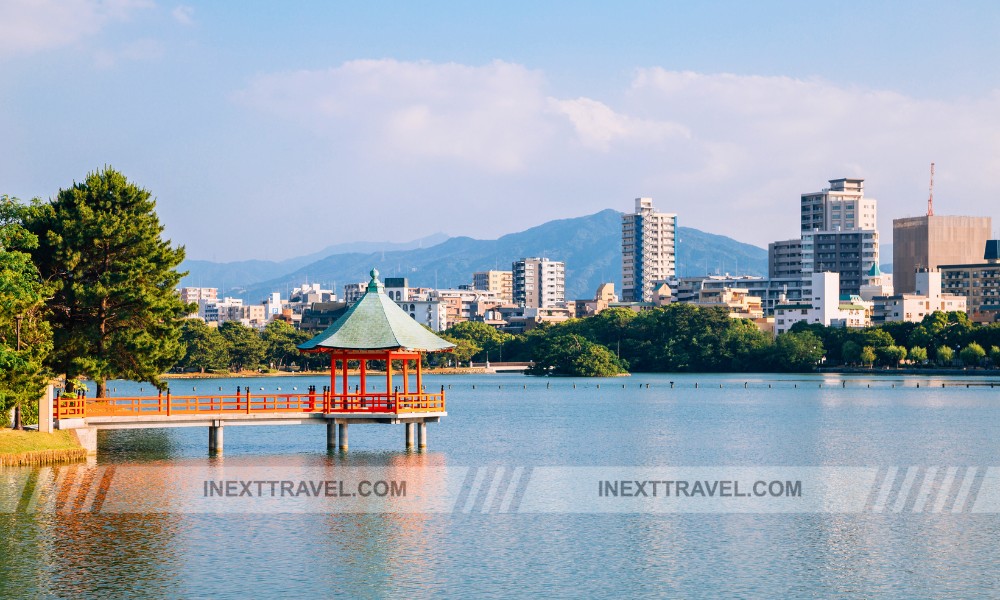
This influence is evident in the park’s main feature, a large and beautiful pond that mirrors the sky and surrounds three picturesque islands connected by elegant stone bridges.
Ohori means “a large moat” in Japanese, and the park was named after the old moat that was part of the Fukuoka Castle town’s western defense. Today, this expansive pond serves as the park’s centerpiece, providing an ideal setting for paddle boating—a favorite activity among visitors who wish to enjoy the calm waters and scenic views from a different perspective.
The well-maintained path encircles the pond, which is about 2 kilometers long and perfect for strolls, jogging, or cycling. It is a popular spot not only for tourists but also for locals looking to unwind.
Lush greenery and meticulously landscaped gardens surround the pond, creating a peaceful ambiance that changes with the seasons. Spring brings cherry blossoms, summer is vibrant with green leaves, fall showcases fiery maples, and winter offers crisp, serene landscapes.
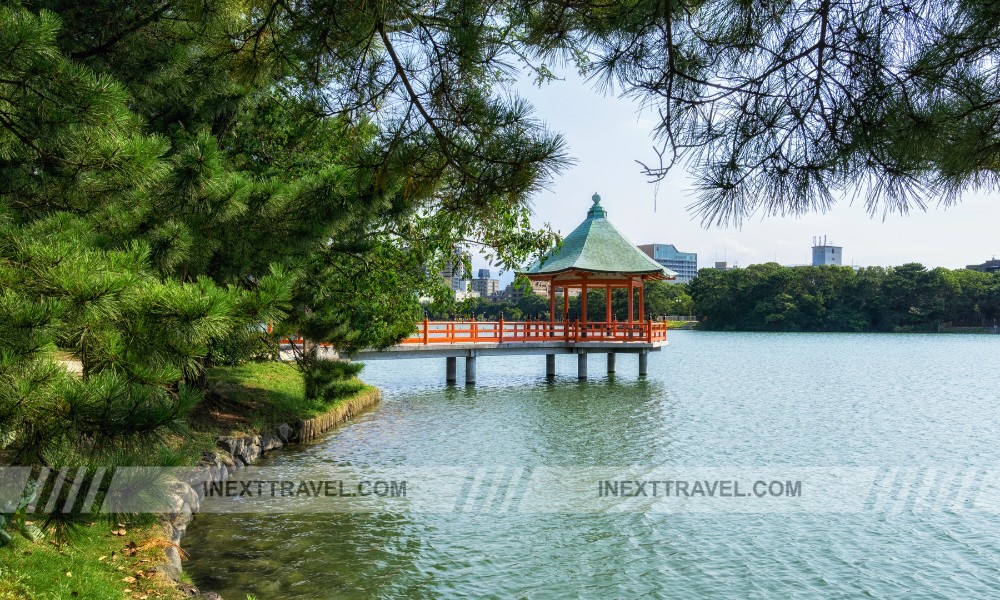
The park also features a Japanese garden, where carefully placed rocks, water features, and traditional plants offer a contemplative environment to engage with nature quietly.
Additionally, Ohori Park is culturally significant, housing the Fukuoka Art Museum within its grounds. The museum boasts a diverse collection of art, including works from local and international artists, and offers a cultural complement to the park’s natural beauty.
With its natural beauty, recreational activities, and cultural offerings, Ohori Park is more than just a park—it’s a cultural landmark providing visitors with a rich, multi-faceted experience.
Whether you’re paddling across the tranquil pond, exploring the art exhibits, or enjoying a quiet moment under the shade of a cherry tree, Ohori Park is an essential part of Fukuoka’s charm. It offers a peaceful escape and a moment of reflection in the city’s heart.
Number 8: Tochoji Temple.
Number 8 takes us to Tochoji Temple, a revered and historical landmark in Fukuoka. Founded in 806 by Kukai, also known as Kobo Daishi, who is one of Japan’s most significant religious figures, Tochoji Temple holds a special place in the cultural and spiritual landscape of the city.
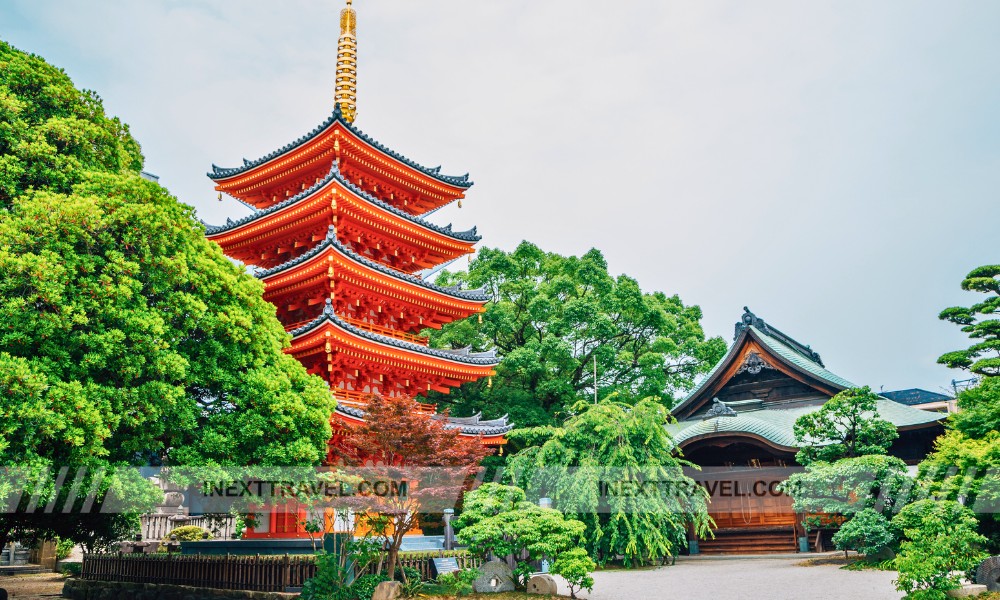
The temple is particularly famous for housing Japan’s giant wooden statue of the seated Buddha, which stands at an impressive height and exudes a profound sense of peace and sanctity. This grand statue is a marvel of religious art and a significant symbol of Buddhist teachings and philosophy.
In addition to the magnificent Buddha statue, Tochoji Temple is also known for its striking five-story pagoda, which, with its vibrant colors and intricate woodwork, adds a dramatic touch to the temple grounds.
The pagoda, visible from various points around the temple, contributes to the classic Japanese temple aesthetic and is a popular subject for photography enthusiasts.
Tochoji Temple is not just a place of quiet contemplation; it also serves as a vibrant center of community activity, especially during the various festivals held throughout the year.
One of the most notable is the Setsubun festival in February, where locals and visitors participate in the traditional bean-throwing ceremony to drive away evil spirits and welcome good fortune for the coming year.
The temple’s lively atmosphere during these festivals, complete with food stalls, traditional music, and performances, offers a glimpse into the living traditions of Japanese Buddhism.
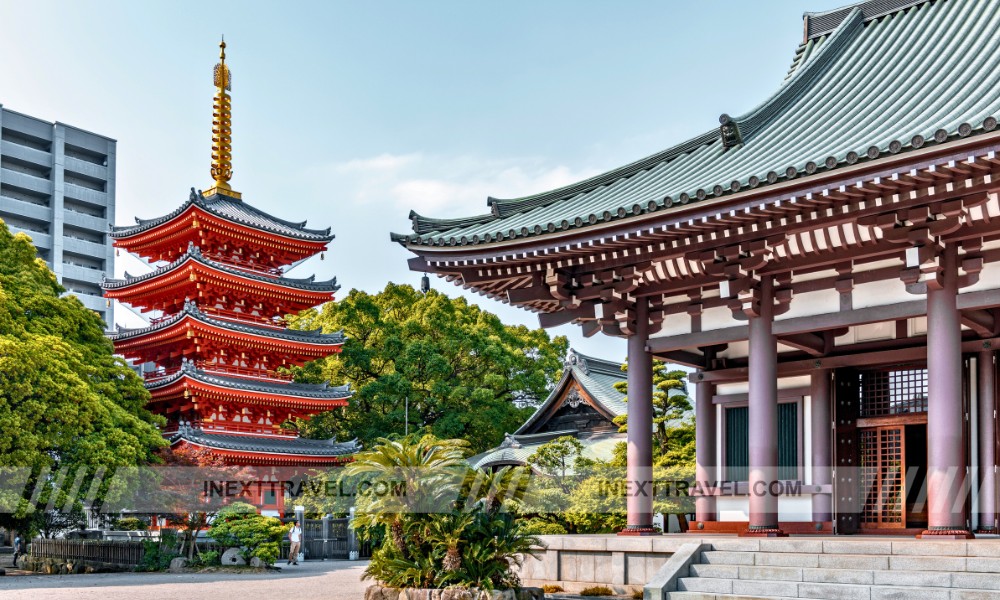
The temple grounds also include several smaller shrines, a beautiful Japanese garden, and a pond that make strolling through the temple a visually pleasing and tranquil experience. These features give visitors a deeper understanding of the temple’s history and its role in the community.
Visiting Tochoji Temple offers a rich blend of spiritual heritage, cultural history, and artistic beauty, making it a must-visit destination for anyone interested in exploring the depths of Fukuoka’s religious and historical roots.
Whether you come to marvel at the giant Buddha, reflect in the serene garden, or enjoy the festive energy during special events, Tochoji Temple provides a meaningful and memorable experience.
Number 7: Uminonakamichi Seaside Park.
Coming in at number 7, Uminonakamichi Seaside Park offers a sprawling haven for nature lovers and outdoor enthusiasts alike. Located on a narrow peninsula that curves into Hakata Bay, this extensive park spans over 300 hectares and is renowned for its breathtaking beauty and wide array of recreational activities.
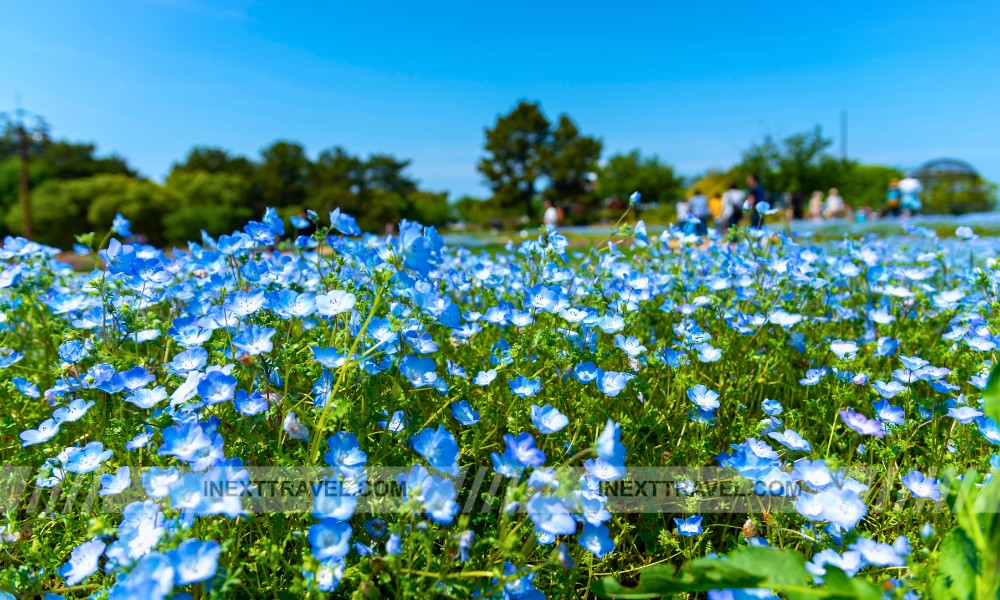
Its vast size and diverse landscapes make it an ideal destination for families, cyclists, and anyone looking to immerse themselves in nature without straying far from Fukuoka City.
One of the park’s most captivating features is its seasonal flower fields, which bloom in vibrant succession throughout the year. In spring, visitors can wander through fields of tulips and nemophila; summer brings sunflowers and cosmos; and autumn transforms the landscape with waves of cosmos and salvias. These floral displays provide stunning visuals and a fragrant backdrop for leisurely walks and picnics.
Beyond the flower fields, Uminonakamichi Seaside Park has various amusement rides, including a Ferris wheel that offers panoramic views of the surrounding sea and cityscape. The park boasts an extensive network of cycling routes for those looking for more active pursuits.
Bicycles are available for rent, allowing visitors to easily explore the park’s vast expanse, from its open lawns and wooded areas to its tranquil beaches along the coast.
The park also features several themed gardens, including water and rose gardens, each meticulously designed to provide a unique sensory experience.
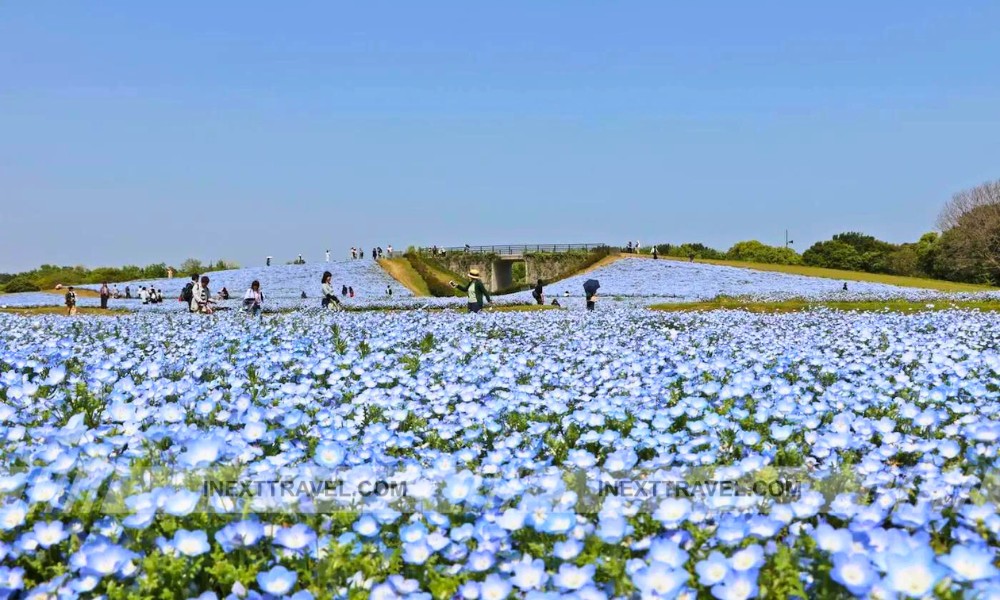
Additionally, sports facilities, playgrounds, and an animal zoo further enhance the park’s appeal, ensuring that there is something for everyone, regardless of age or interest.
Uminonakamichi Seaside Park is more than just a park; it’s a dynamic recreational area where natural beauty and fun activities blend seamlessly. Whether you’re looking to enjoy the tranquility of blooming gardens, seek adventure in outdoor activities, or relax by the sea, Uminonakamichi Seaside Park offers a perfect escape into nature’s embrace, making it a must-visit destination in Fukuoka.
Number 6: Kushida Shrine.
At number 6, Kushida Shrine is a cornerstone of Fukuoka’s spiritual and cultural life. Established in 757 AD, this venerable shrine is deeply embedded in the local community. It serves as the spiritual heart of the Hakata Gion Yamakasa Festival, one of Fukuoka’s most vibrant and significant events.
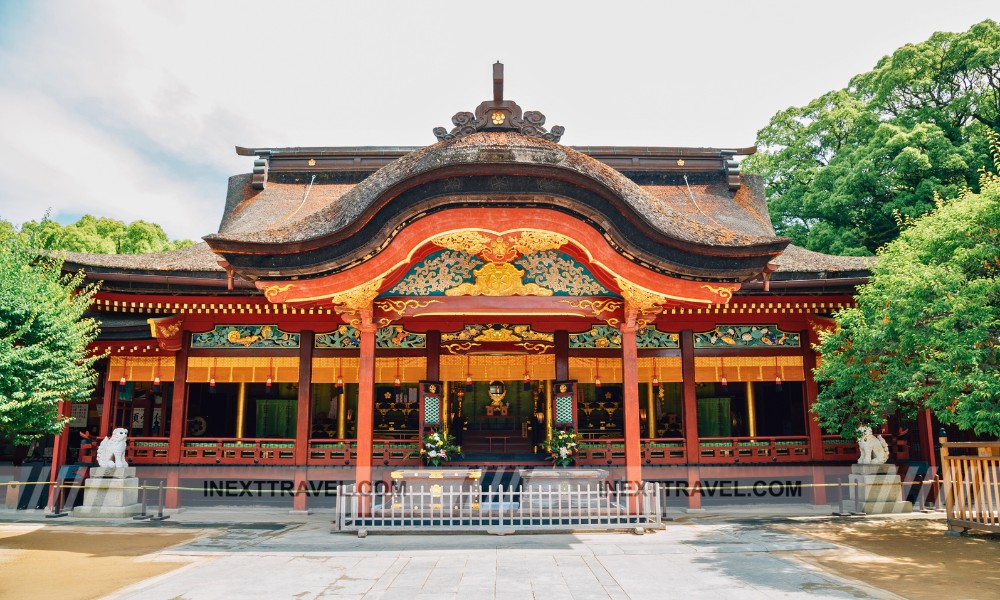
This annual summer festival, known for its energetic and elaborate float races, draws thousands of spectators and participants, highlighting the shrine’s central role in preserving and celebrating local traditions.
Kushida Shrine is significant for its festival and revered for its rich historical and spiritual heritage. The shrine grounds host several ancient artifacts, including a ginkgo tree that is said to be over 1,000 years old, symbolizing the shrine’s enduring presence and the deep-rooted cultural traditions of Hakata.
Architecturally, the shrine features beautifully crafted buildings and gates adorned with detailed carvings and traditional motifs that reflect classical Japanese shrine design.
Visitors to Kushida Shrine can explore various cultural treasures within its precincts, including intricate floats displayed from past festivals, which are works of art in their own right, showcasing the craftsmanship and artistic talent of the local community.
The shrine also houses a museum that provides insights into its history and the significance of the Yamakasa festival, offering a deeper understanding of both the spiritual and communal aspects of Hakata life.
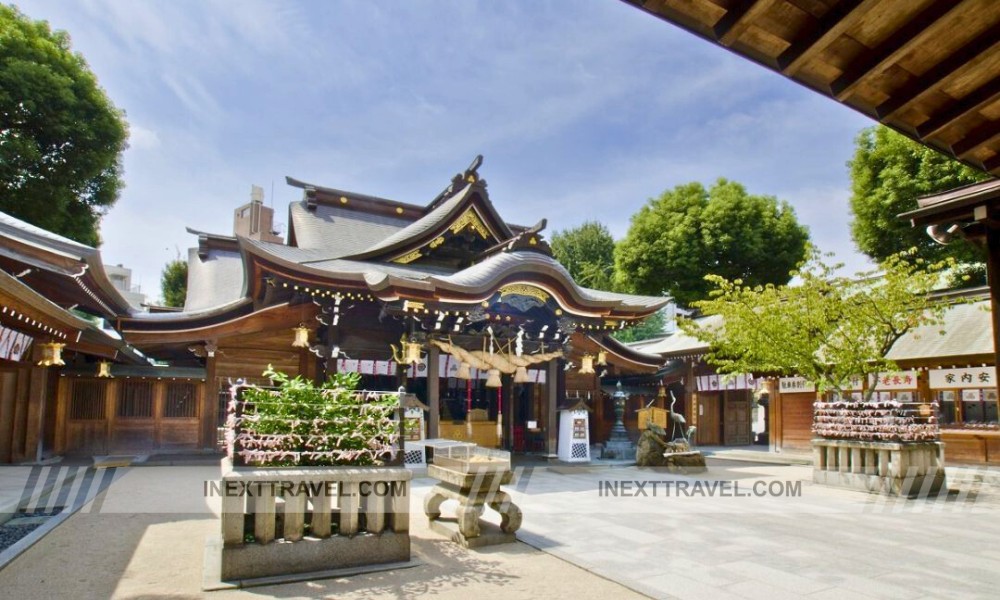
Throughout the year, Kushida Shrine remains a focal point for various religious ceremonies and seasonal celebrations, reflecting different aspects of Shinto tradition and local customs.
These events provide a unique opportunity for visitors to experience authentic Japanese cultural expressions in an intimate and historic setting.
Kushida Shrine is more than just a religious site; it symbolizes Hakata’s history, culture, and community spirit.
Whether you are drawn to its spiritual significance, interested in its historical artifacts, or looking to engage with local traditions, Kushida Shrine offers a rich, immersive experience that connects the past with the present in the heart of Fukuoka.
Number 5: Hakata Machiya Folk Museum.
At number 5, the Hakata Machiya Folk Museum provides a captivating glimpse into the traditional lifestyle and crafts of old Hakata, a historic district in Fukuoka known for its rich cultural heritage.
They were housed in authentically restored machiya houses—traditional townhouses typical of the Edo period—this museum not only preserves but also brings to life the region’s vibrant history.
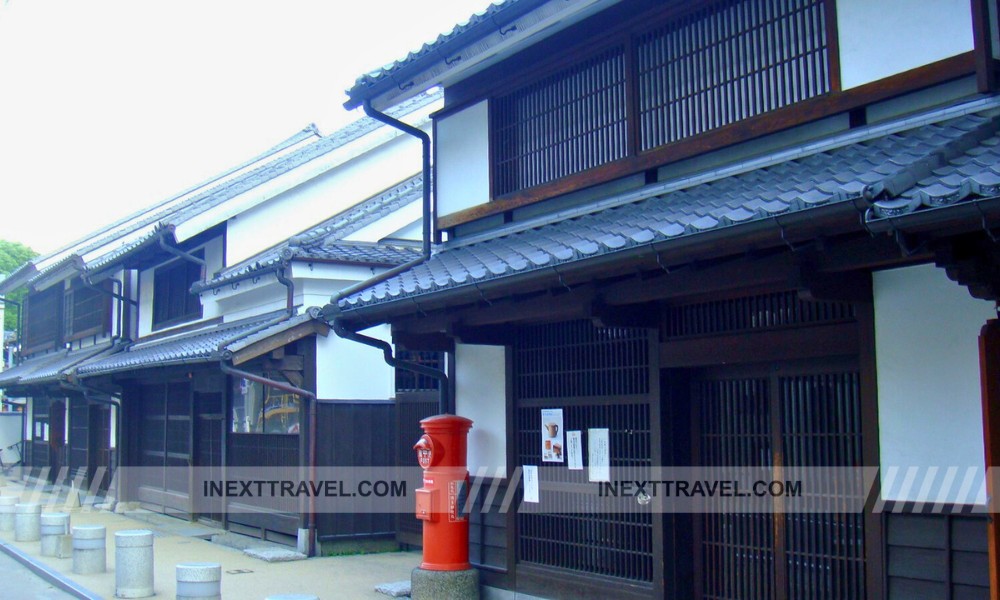
Visitors step through the Hakata Machiya Folk Museum doors and are transported back in time to a meticulously recreated setting of a bygone era. The museum’s interior faithfully represents a traditional Hakata residence, complete with tatami mat rooms, sliding doors, and wooden beams, offering a tangible sense of the daily lives of craftspeople who once thrived in this merchant quarter.
The museum is interactive, making history accessible and engaging through hands-on activities and workshops. Visitors can participate in traditional crafts such as Hakata-ori weaving, a textile technique famous for its intricate patterns and significant cultural value.
Live cultural demonstrations, including traditional music and dance performances, further enrich the visitor experience and provide insights into Hakata’s intangible cultural heritage.
Additionally, the Hakata Machiya Folk Museum serves as an educational resource, featuring exhibits on the historical development of Fukuoka and the various traditional festivals and customs of the Hakata area. Each exhibit is designed to provide a comprehensive understanding of the historical and cultural contexts that shaped the people’s lives in this region.
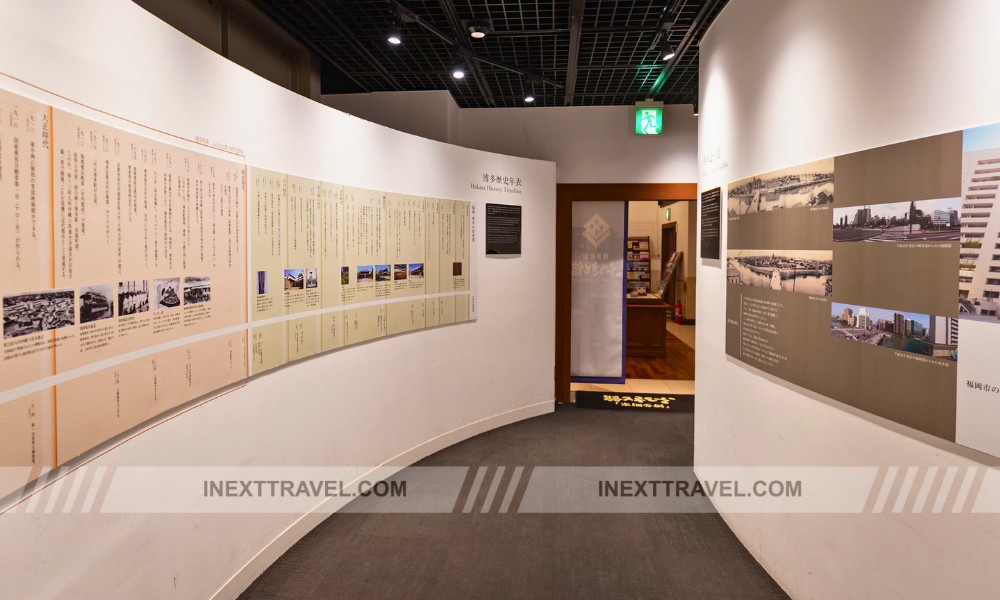
The museum also includes a charming shop where visitors can purchase locally made crafts, providing a unique opportunity to take a piece of Hakata’s rich cultural fabric home.
Whether you’re a history buff, a culture enthusiast, or simply curious about traditional Japanese lifestyles, the Hakata Machiya Folk Museum offers a unique and immersive experience that highlights the historical significance and enduring charm of old Hakata.
Number 4: Nokonoshima Island Park.
At number 4, Nokonoshima Island Park emerges as a stunning natural retreat just a short ferry ride from the bustling city of Fukuoka. Nestled in the middle of Hakata Bay, this island park is a favorite getaway for those seeking tranquility and natural beauty close to the town.
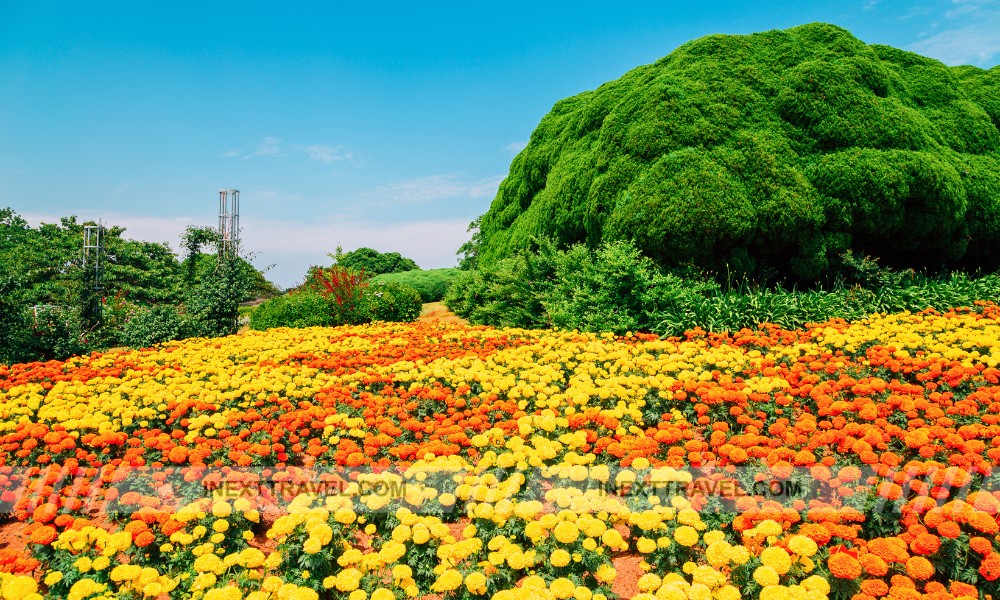
Throughout the year, the park celebrates the changing seasons with vibrant blooms and offers numerous spots for peaceful picnics with spectacular views of the surrounding waters and cityscape.
Nokonoshima Island Park spans approximately 150,000 square meters and is renowned for its extensive flower fields that change colors and textures with the seasons. In spring, the park is adorned with the bright yellows of rapeseed blossoms and the delicate pinks of cherry blossoms, creating a painterly landscape that attracts photographers and nature lovers.
Summer brings a burst of colorful marigolds and sunflowers. At the same time, autumn covers the landscape in cosmos and other fall flowers, adding a rich tapestry of colors that enhance the island’s natural beauty.
The park is not just about floral displays; it offers a range of recreational activities that make it ideal for family outings and romantic escapes. Visitors can enjoy barbecue spots, camping sites, and picnic areas perfectly positioned to offer stunning views of Hakata Bay and the Fukuoka skyline. There are play areas and mini animal farms for children, which provide entertainment and interaction with nature.
Additionally, Nokonoshima Island Park hosts various events and festivals throughout the year, which add to the island’s vibrant atmosphere and draw crowds from across the region. These events often celebrate the seasonal blooms and local culture, offering unique experiences like flower picking, traditional games, and regional culinary delights.
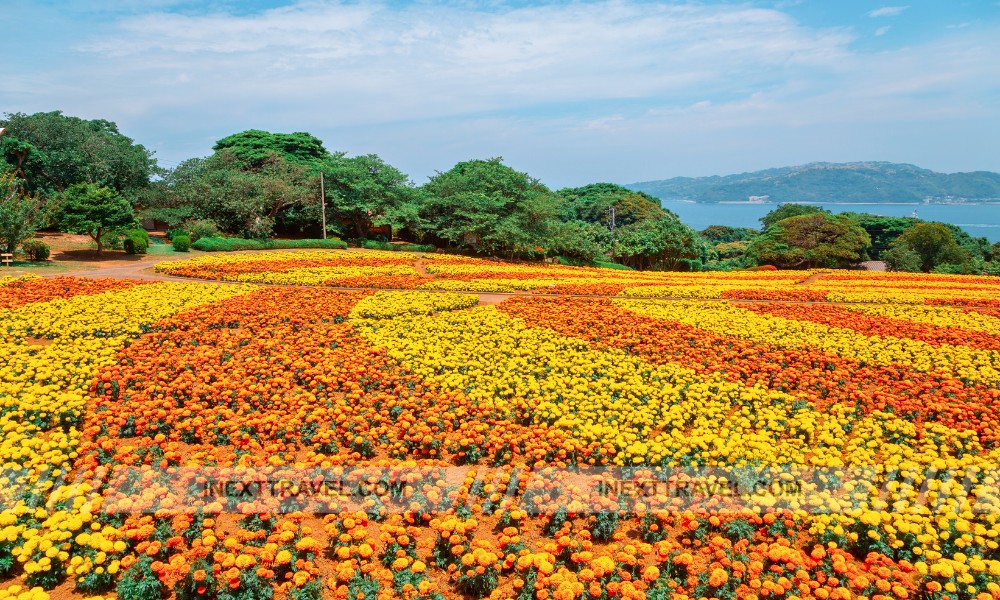
For those looking to extend their visit, accommodation facilities are available on the island, allowing visitors to immerse themselves fully in the peaceful environment and natural beauty of Nokonoshima.
Whether you’re looking for a day trip to escape the hustle and bustle of the city or a peaceful retreat into nature, Nokonoshima Island Park provides a perfect blend of scenic beauty, recreational fun, and cultural activities, making it a must-visit destination on any trip to Fukuoka.
Number 3: Marine World Uminonakamichi.
Our number 3 spot goes to Marine World Uminonakamichi, a premier destination for marine exploration and entertainment located on the scenic Uminonakamichi Seaside Park in Fukuoka.
This expansive aquarium is dedicated to educating visitors about the wonders of the aquatic world through interactive exhibits, engaging displays, and live animal performances that captivate audiences of all ages.
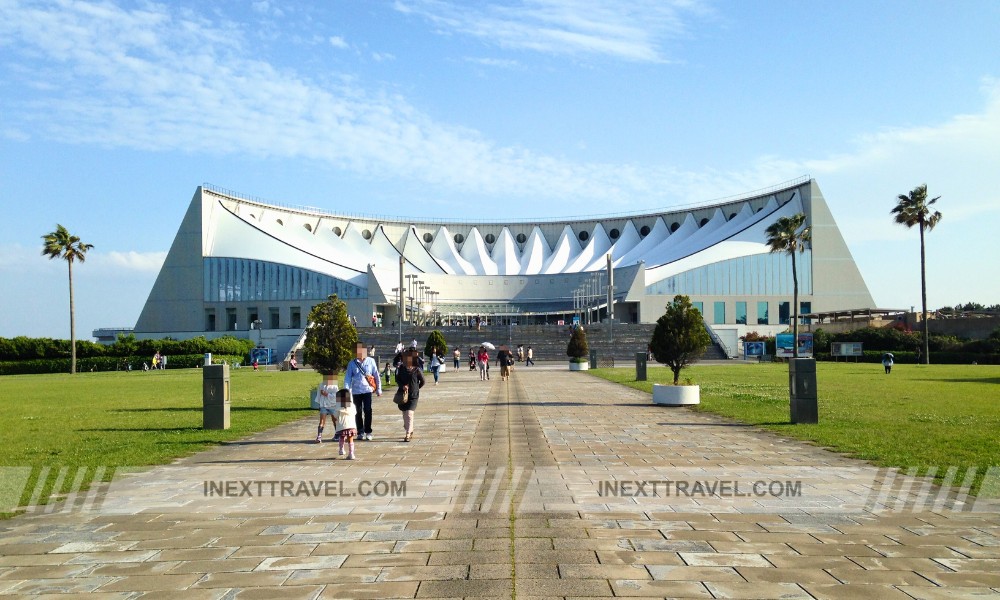
Marine World Uminonakamichi stands out due to its comprehensive collection of marine species from around the globe, including rare and exotic fish, sharks, rays, and sea turtles.
The aquarium’s layout is designed to take visitors on a journey through different marine environments, from the sandy shores and coral reefs to the deep, mysterious waters of the ocean. Each zone is meticulously crafted to mimic natural habitats, providing a home to its inhabitants and a fascinating insight for visitors.
One of the highlights of Marine World is the large central tank that offers a panoramic view of life under the sea. Here, visitors can witness the grace of manta rays and the awe-inspiring presence of sharks, all from the safety and comfort of a well-designed viewing area.
Additionally, the aquarium features interactive touch pools where visitors can get up close with starfish, sea urchins, and other marine creatures, making for an immersive experience.
The dolphin and sea lion shows are among the most popular attractions, drawing large crowds with performances demonstrating these marine mammals’ intelligence and agility. These shows entertain and aim to foster a deeper appreciation and respect for aquatic life, emphasizing conservation and the importance of protecting our oceans.

Beyond the animal exhibits, Marine World Uminonakamichi is committed to marine education and conservation. It offers educational programs and workshops that engage schools and families, encouraging a deeper understanding of marine biology and the environmental challenges faced by ocean ecosystems.
Whether you’re a family looking for an educational outing, a couple seeking a unique date experience, or a marine enthusiast eager to learn more about ocean life, Marine World Uminonakamichi offers a rich, educational, and entertaining experience that makes it a must-visit attraction in Fukuoka.
Number 2: Fukuoka Asian Art Museum.
Coming in at number 2, the Fukuoka Asian Art Museum is a vibrant cultural institution located in the heart of Fukuoka. It is dedicated to showcasing the rich tapestry of modern and contemporary art from across Asia.
This museum is a unique venue that exhibits and actively engages with the dynamic artistic movements currently shaping the region.
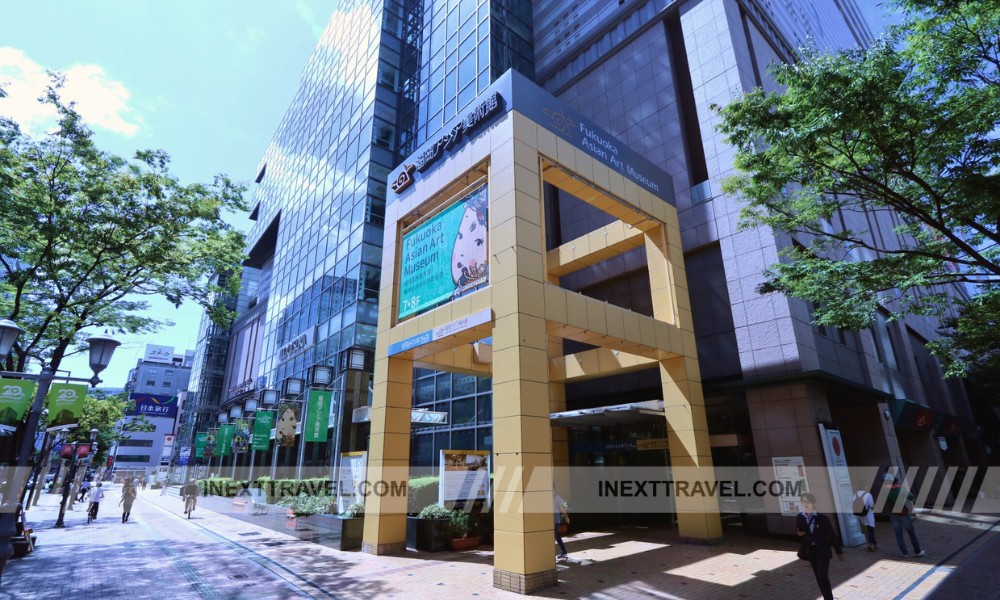
The museum’s collection is extensive and diverse, featuring works from countries ranging from East Asia to Southeast Asia and beyond. It includes a variety of media, such as paintings, sculptures, installations, and video art, created by both emerging talents and established artists.
This broad representation provides visitors with a comprehensive insight into the similarities and diversities of Asian art, reflecting the complex social, cultural, and political landscapes of its countries.
One of the Fukuoka Asian Art Museum’s key strengths is its commitment to fostering artistic exchange and dialogue. The museum regularly hosts international exhibitions, artist residencies, and cultural seminars that bring together artists, curators, and scholars from various parts of Asia.
These programs enhance the museum’s collection and contribute to a deeper understanding and appreciation of Asian cultures and their evolving artistic expressions.
The museum also features interactive areas and educational programs encouraging visitors to engage meaningfully with the art. These initiatives are designed to make art accessible to audiences of all ages and backgrounds, sparking curiosity and dialogue about contemporary Asian art and its global relevance.
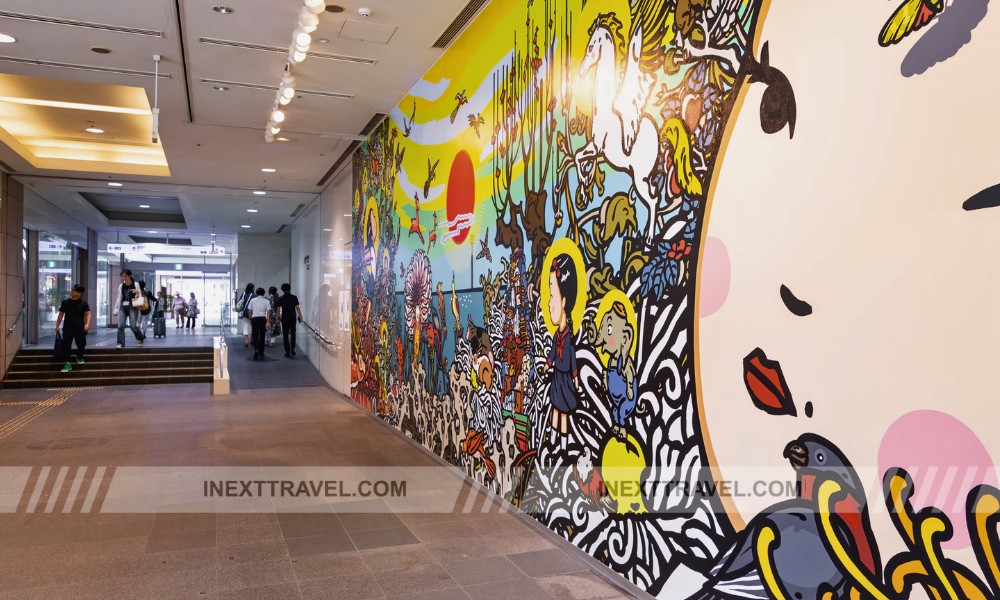
Situated in the bustling city center, the Fukuoka Asian Art Museum is more than just a museum—it’s a cultural hub where locals and tourists alike can experience the vibrancy and diversity of contemporary Asian art.
Whether you are an art lover or a casual visitor, the museum offers a captivating exploration of Asia’s artistic innovations. It is a must-visit destination in Fukuoka to understand the region’s cultural pulse.
Number 1: Canal City Hakata.
At number one, Canal City Hakata stands as a pinnacle of urban innovation and entertainment in Fukuoka. More than just a shopping mall, this sprawling complex is aptly described as a city within a city.
It features a distinctive architectural design with a canal running through the heart of the building. This setup creates a dynamic environment where water, commerce, and leisure merge to offer a unique shopping and entertainment experience.
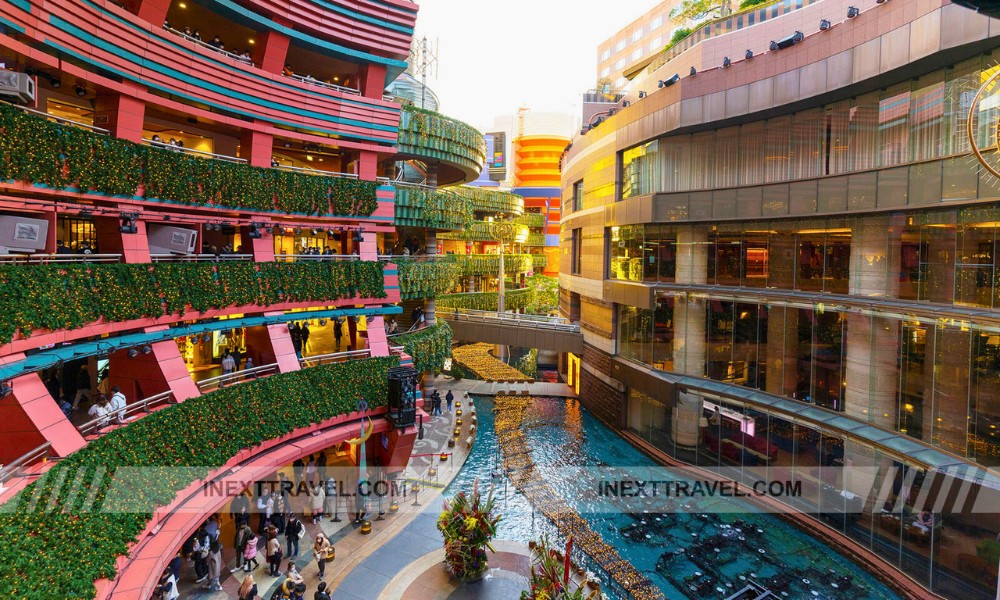
Canal City Hakata is a vibrant hub with over 250 shops, ranging from local boutiques to international brands, making it a paradise for shoppers. Additionally, it houses a diverse selection of restaurants and cafes that offer everything from fast food to gourmet dining experiences, representing cuisines from around the globe. The complex also features a multiscreen cinema, a theater for live performances, and a hotel, ensuring it caters to all tastes and preferences.
One of the most striking features of Canal City is the spectacular water shows that are held in the central canal. These shows combine music, light, and fountain technology to create mesmerizing performances that captivate children and adults alike, enhancing the atmosphere and providing a visual treat for visitors.
The design of Canal City Hakata is also noteworthy. The complex’s colorful, futuristic architecture stands out in Fukuoka’s cityscape and creates a visually appealing environment that encourages exploration and enjoyment. With its winding pathways, bridges over the canal, and open plazas, the complex invites visitors to wander and discover its many attractions.
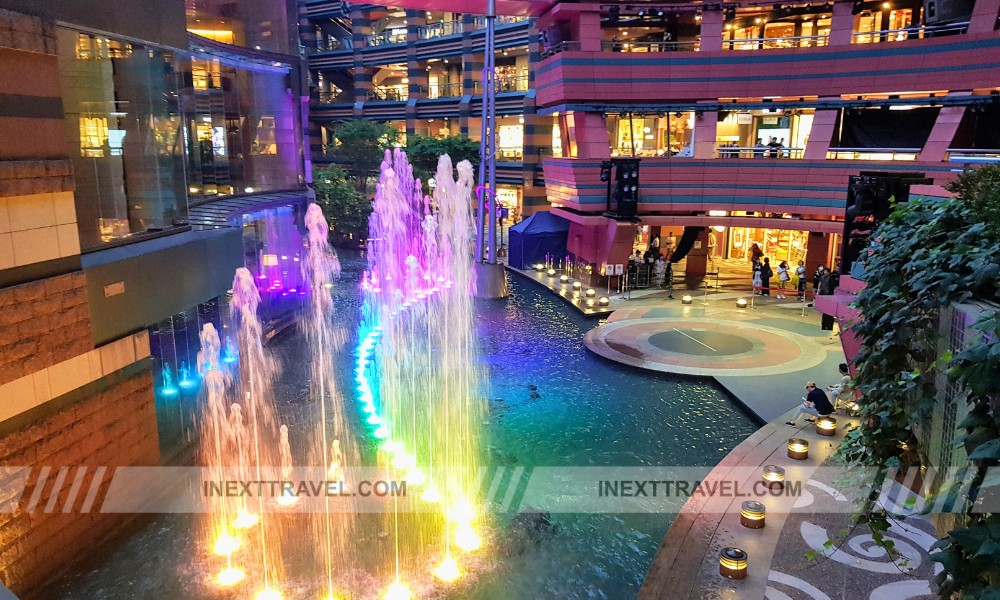
Canal City Hakata is more than a shopping center; it’s a cultural and recreational landmark that draws millions of visitors annually. Whether you’re looking to shop, dine, enjoy live entertainment, or relax by the canal and watch a water show, Canal City offers a comprehensive experience beyond conventional retail destinations. It embodies the mini-city’s spirit, making it a must-visit destination in Fukuoka for anyone seeking entertainment and shopping in one place.
Conclusion
As we conclude our journey through the ten best beautiful places in Fukuoka, it’s clear that this city is a treasure trove of diverse attractions, each offering a unique blend of beauty, history, and culture.
From the serene beauty of Ohori Park to the bustling excitement of Canal City Hakata, Fukuoka combines the charm of a modern city with the tranquility of natural landscapes, making it a must-visit destination on Japan’s Kyushu Island.
Each location we’ve explored highlights a different facet of Fukuoka, from historical depth at ancient temples like Tochoji to strolls amidst floral splendor at Nokonoshima Island Park.
These spots offer stunning views and enjoyable experiences, enriching our understanding of Fukuoka’s rich cultural heritage and contemporary vibrancy.
Whether visiting for the first time or looking to rediscover Fukuoka, these destinations will surely provide memorable experiences and picturesque settings that capture the city’s essence.
We hope this guide inspires you to explore these beautiful places, immerse yourself in the local culture, and find your favorite spots in this dynamic city.
Safe travels, and enjoy the beauty that Fukuoka has to offer!